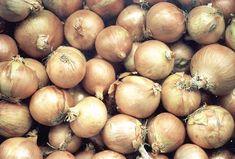
Onion prices in the UK have risen to their highest levels for eight years as a range of factors combine to tighten supply. Prices on wholesale markets were up to 780p for 25kg of UK product compared to 325-370p at this time last year.
According to the British Onion Producers’ Association (BOPA) the very hot, dry July followed by an unseasonably rainy August caused problems for the crop in production. Although lifting in early September was carried out under good, dry, conditions, the crop is of mixed quality.
There is reduced availability of good-quality product and some staining, as well as a reduction in sizes, and problems with long-term storage quality.
BOPA estimates that overall UK production is down by some 55,000 tonnes on 2005, with a total estimated tonnage of 330,000t. This compares to peak volumes in 2004 of 494,000t.
Northern European volumes overall are down by an estimated 1 million tonnes on last season. “The reduced volume in the UK and Europe as a whole is having an effect on supply volumes and therefore prices,” said Tim Wigram, commercial director for onions at G’s marketing and chairman of BOPA. “We are currently seeing raw material prices at levels not experienced for at least the last eight years. The quality of crops in store is a mixed bag. UK crops are generally of better quality than those seen in Europe and it is unlikely that European crop quality will satisfy the demands of UK retailers.”
BOPA maintains that UK supplies have an advantage due to storage infrastructure. “The higher quality UK storage facilities are already showing benefit through the ability to dry and cool crops and remove excess moisture from the summer rains,” said Wigram. “This is proving critical, especially in the mild winter seen so far in the UK and Europe.”
Wigram said the outlook for the season remains one of a limited supply of large onions and bulbs in pre-packing sizes. “Looking forward, we are still relatively early in the season, which traditionally lasts to late May or early June,” he said. “The long-term picture for the season should become much clearer in the New Year when growers start to empty their cold stores.



